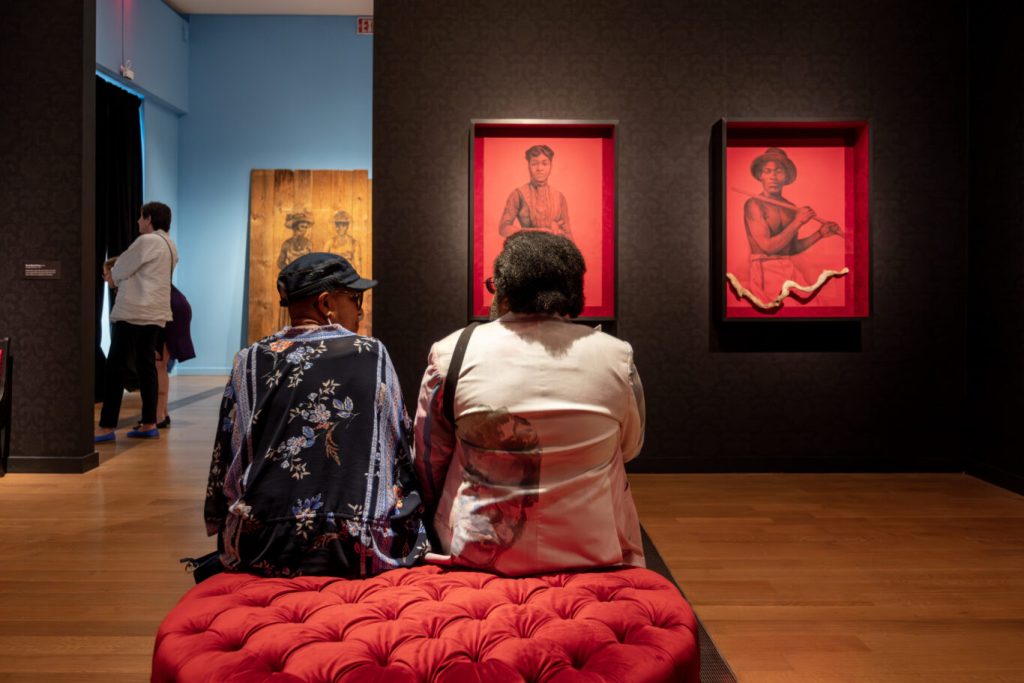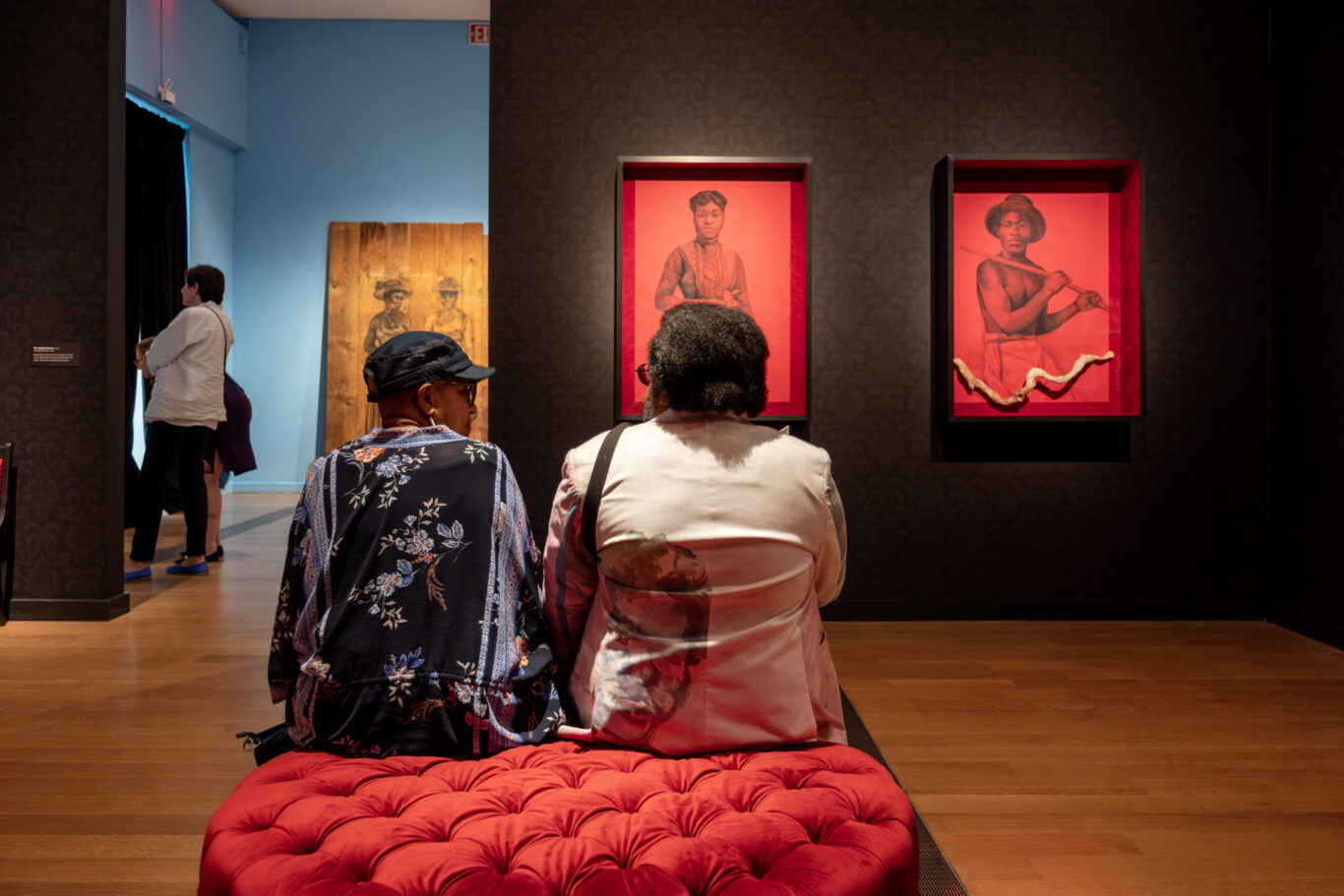
“Whitfield Lovell Explores African American Histories Through Art”

# Exploring Whitfield Lovell’s Deep Connections to Black Histories in *Passages* Exhibition
Whitfield Lovell, a Bronx-born artist renowned for his powerful visual storytelling, takes viewers on an evocative journey through Black history and identity in his latest traveling career retrospective, *Passages*. This comprehensive exhibition, currently on view at the McNay Art Museum in San Antonio until January 2025, threads together diverse elements of Lovell’s lifelong exploration of memory, ancestry, and the African diaspora. The exhibition weaves past into present, addressing the forgotten people and marginalized narratives deeply embedded in the history of the Black Atlantic.
## Embedded in Family and Ancestral Ties
Lovell’s artistic journey begins deeply rooted in family and biographical reflections, particularly evident in works such as *Grandma’s Dress* (1990), where familial histories meet broader Black cultural experiences. This early piece illustrates a Black Indigenous woman, gently reclining amid palm trees, holding a palm frond like a victory symbol exercising control over death. The personal resonance behind this work draws partly from Lovell’s paternal ties to Barbados, an island at the far reaches of the Black Atlantic, a reminder of how the African diaspora reaches far across time and geography.
This foundational work in the exhibition helps to set the tone for an overarching theme: the search for identity, community, and a reclaiming of Black ancestries that have often been overlooked or erased in dominant narratives. Lovell’s newfound emphasis on these themes brims with a quiet yearning, a tender connection to genealogies long lost and fragments of lives restored through his art.
## Engaging All Senses in a History Forgotten
The exhibition moves deeper into Lovell’s pursuit of historical reconnections with *Deep River* (2013), an impressive mixed-media installation evoking the experience of Civil War-era runaway slaves. Here, sensory experiences take center stage. As visitors enter the gallery, they are greeted by the earthy scent of decomposing tree bark, evoking organic roots intertwined with the passage of time. Sounds of running water and chirping birds surround the space, echoing the transition or crossing over to freedom, while a mound of nutrient-rich soil lies at the center, adorned with long-forgotten everyday objects: bottles, guns, Bibles, musical instruments, and more objects, signifying survival and hope.
A striking centerpiece of *Deep River* is a series of turned wooden discs painted with carefully rendered portraits of Black individuals dating from the Civil War era onwards. Their gazes seem to witness the viewer, haunting and humanizing an epoch often reduced solely to impersonal historical facts. Also standing as metaphors for resilience are a pile of suitcases and a man’s portrait holding a symbolic set of keys, representing freedom yet to be attained.
Lovell’s talent in creating immersive environments—one that evokes emotional and intellectual contemplation—extends beyond the visual into the tactile and olfactory, urging viewers to feel the visceral presence of long-past historical moments.
## Photo-Based Works: Resonating with Lost Origins
Lovell further extends his pursuit of Black ancestral heritage in some of his most celebrated works, including the *Kin* series (2008–2011). Utilizing archival imagery from photo booths and old ID cards spanning 1850 to 1950, Lovell brings forgotten lives into sharp focus. Charcoal becomes his tool of resurrection, as these intimate portraits are delicately brought to life, reiterating the personal stories behind broad social histories marked by segregation, displacement, migration, and survival.
In *Card Pieces* (2020–2021), Lovell’s portrayal of historical figures on playing cards takes on both humorous and solemn connotations. Each card has been paired with a portrait marked by personality—such as the Queen of Hearts matched with a regal-looking woman gazing stoically into the distance. This playful yet profound series cleverly reinvents the perception of unknown people from history, assigning their likenesses the reverence and individuality that may have been denied them during their lifetime.
One particularly enduring piece in the exhibition, *Wreath* (2000), shows a man in three-quarters view encircled by a rusted steel nest, loaded with a sense of protection and survival amidst anguish. For Lovell, minimalist forms such as these are imbued with sentinel-like weight, silently suggesting the unseen battles for dignity and respect fought by Black Americans across time.
## Honoring Black Achievement: The Story of Jackson Ward
As the exhibition moves toward its culmination, viewers are invited into an intimate yet monumental portrayal of Jackson Ward, Richmond, Virginia—a community central to African American entrepreneurial success in the post-Civil War years. Lovell’s suite of works commemorating this space charts the genesis of a thriving Black middle class, unbowed and upward-bound notwithstanding the broader socio-political milieu.
In *Visitation* (2001), Lovell situates viewers at the crossroads between personal life and community development. The setting is